

J&C Blog
Find all the latest marketing trends on the J&C Blog.

Find all the latest marketing trends on the J&C Blog.
How is success defined for a direct mail campaign? Most people would say success is defined by outcome. In other words, if the direct mail met its objectives, then it was successful. But why do some things work better than others?
The following are 7 successful direct mail examples. I’ve included a quick overview on why we believe these direct mail examples worked. For the most part, the success can be attributed to the application of tried-and-true direct mail best practices that drive campaign performance.
Click here to download your Direct Mail Best Practices eBook.
1. Why it works: Translates the insight perfectly, but doesn’t forgo any direct marketing mechanics.
Good creative is often measured by having a strong translation of the strategy and insight. When we were first approached with the idea of marketing a 7-year electricity product, I have to admit we were a bit taken back. It seemed there would be a number of inherent barriers to overcome to generate sign-ups for this new long-term product in such a low-involvement category.
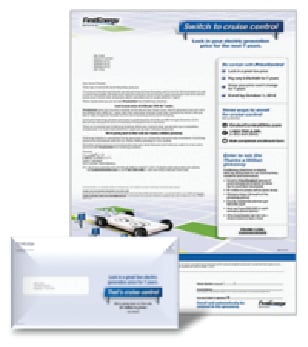
This particular campaign was built on the insight, “Set it and forget it.” The idea of “Cruise Control” transformed the insight into a tangible, campaignable idea that broke through the clutter.
One of the most effective parts of this campaign was that it retained all the elements that make direct marketing work: strong letter content and layout, inclusion of a sidebar, use of a P.S., as well as incorporation of a response device that included multiple ways to respond. The package also contained multiple elements—another proven winner in direct marketing. This direct mail example demonstrates application of strategic and creative best practices.
2. Why it works: Follows the “more is more” best practice of direct mail.
One of the key best practices in direct mail is if you’re trying to get people to make a decision, make sure you provide all of the necessary information to get them to say “yes.” This direct mail example was selected to highlight the “more is more” philosophy. At first glance, it might be surprising that a creative approach with such limited graphics is on the list of successful direct marketing examples.
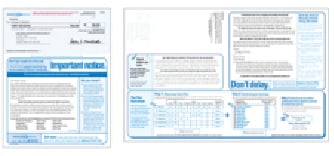
It turns out that people really do read. The letter is still the most-read element of any direct mail package. And a 3-page letter, especially in a compartmentalized newsletter format, has been a proven winner over and over again. This type of format is especially useful for markets where communications are best received in a non-promotional, non-sensationalized manner.
At first a 3-page letter might seem counterintuitive, considering the fast-paced life we lead these days and a general tendency toward concise communications and snippets of information. Direct mail best practices and years of testing history tell us different. The 3-page letter is a proven winner and a solid, effective direct mail example.
3. Why it works: Incorporates all components to drive response.
Successful direct mail is meant to drive you to action. The response can be visiting a web page, picking up the telephone or sending in a response form.
Response best practices include providing multiple ways to respond and incorporating a written response device. It is critical to allow your targets to choose their preferred response method.
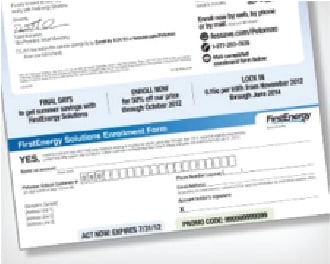
For best results, providing three forms of response is key to the success of any direct mail program. All direct mail packages should provide a response mechanism, such as a mail-back enrollment form; a phone number; and a web link/URL.
In general, about 20% to 25% of target customers will respond using the printed response device, i.e., they will mail back an enrollment form. This is because the printed response device in direct mail serves as both a physical and subliminal reminder to respond. This direct mail example was specifically chosen to highlight the best-in-class approach for leveraging response to drive action.
4. Why it works: Let your target read or scan.
We know that in every direct mail package, the letter is the most-read component.
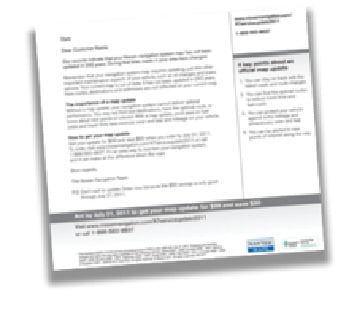
That’s why it’s important to ensure that the letter is working as hard as it can. To further enhance performance, it’s best to present the same information in two different formats within the direct mail package.
This direct mail example demonstrates how the letter should include full content in paragraph form in the body, with key bullets called out in a right rail or right-hand column. This allows the audience to read the content however they prefer, e.g., in-depth or by scanning.
5. Why it works: Personalization leads to relevancy.
This direct mail example highlights how personalized information can be leveraged to create a more customized and relevant communication. It is becoming more and more critical to break through the clutter, and ensuring relevancy is something that always works to break through. Personalization, including the use of personalized URLs (PURLs), increases relevancy (and ultimately deliver strong results).
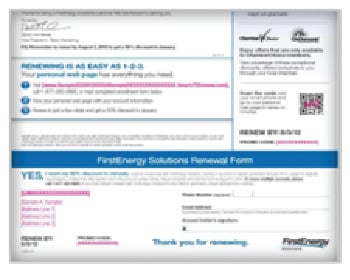
6. Why it works: It takes a risk to break through.
Utilizing dimensional mailings always feels like a financial risk. Was a “Powerpalooza” a bit of a creative risk as well? Well, we thought it might be a bit risky, but we felt it was strategically sound and would creatively break through the clutter to our audience: utility marketers.
Dimensional mailings are a solid lead generation approach. The real estate associated with dimensional mailings, such as a box, can support attention-getting creative. This direct mail example should be reserved for business-to-business environments when sales can do one-on-one sales follow-up.
7. Why it works: Utilizes multiple components within the direct mail package.
Years of testing have confirmed that packages that have multiple elements perform better than those with only one component. Even though the letter is still the most-read element of a direct mail package, we know that using a brochure or a buckslip (insert) in conjunction with a letter always outperforms a letter alone. And using three components always outperforms using two components. This direct mail example demonstrates the value of using multiple components within a direct mail package.
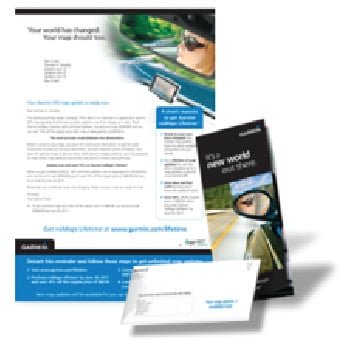
All 7 of these direct mail examples incorporate direct marketing best practices to help ensure better results. To learn more proven ways to enhance the effectiveness of your direct mail programs, download J&C’s direct mail best practices e-book, which showcases more examples that can enhance the performance of your programs.
Topics: Direct Marketing
303 E Wacker Drive, Suite 2030
Chicago, IL 60601
Phone: 312-894-3000
Fax: 312-894-3005